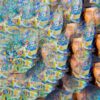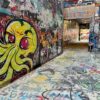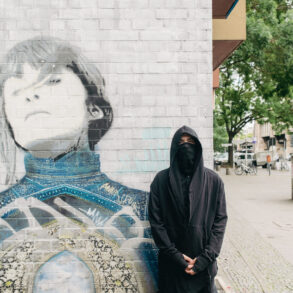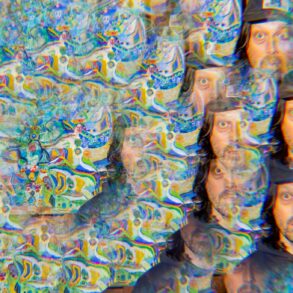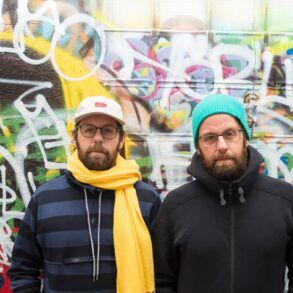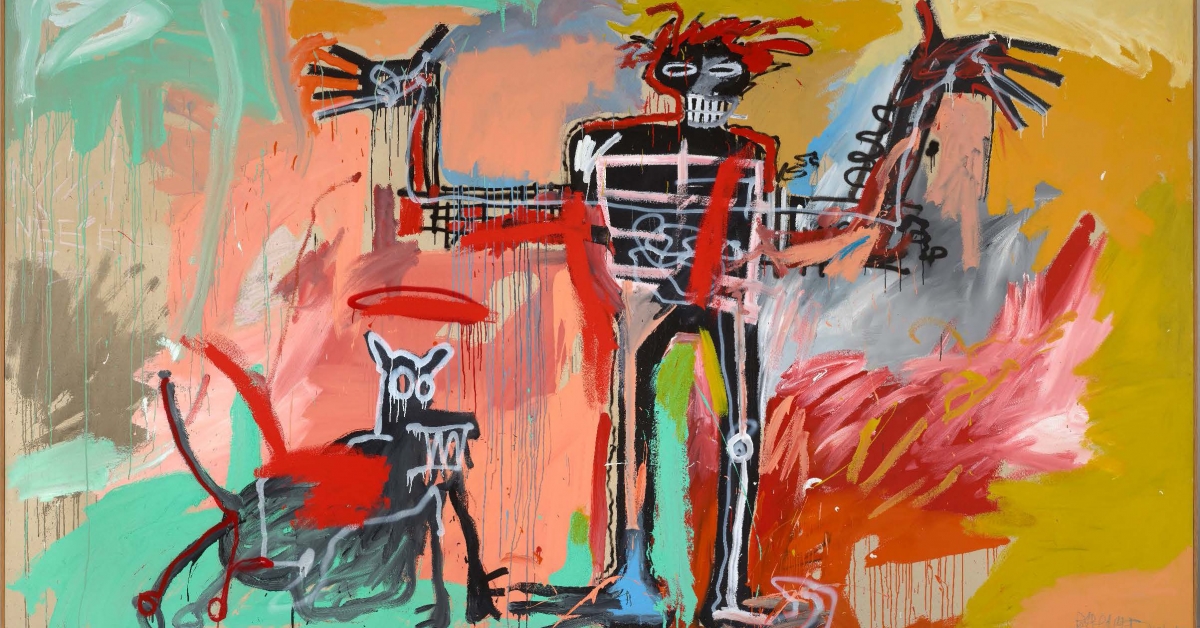
The Smithsonian’s Hirshhorn Museum and Sculpture Garden announces “Basquiat × Banksy,” an exhibition grounded in the presentation of two major paintings: Jean-Michel Basquiat’s “Boy and Dog in a Johnnypump” (1982) and Banksy’s “Banksquiat. Boy and Dog in Stop and Search” (2018). Placed in dialogue, the large painting by Basquiat (b. Brooklyn, New York, 1960–1988) and the responding artwork by Banksy (anonymous; b. near Bristol, England) will reveal throughlines among street art, contemporary art and the popular imagination. “Basquiat × Banksy” will be on view from Sept. 29 through Oct. 26, 2025.
“Basquiat × Banksy” marks the first time that artworks by either artist will be presented at the nation’s museum of modern and contemporary art; it has been made possible through the generous philanthropic support of Kenneth C. Griffin, founder and CEO of Citadel and founder of Griffin Catalyst.
The exhibition will focus on the significance of Basquiat’s vibrant neoexpressionist representation of a Black boy and his dog at play and Banksy’s dystopian rejoinder, a bold composition created more than three decades later. Banksy’s composition highlights the racial and social inequities that pervaded Basquiat’s life as well as recurrent themes in his work that developed out of his real-life experience. Presented in the museum’s lower-level galleries, the two paintings will illuminate how homage and appropriation operate within popular culture, connecting artists in a global dialogue that stretches across geography, media and time.
“Positioning Basquiat with Banksy brings into focus elements of Basquiat’s legacy, notably the movement of street art tropes into museums through his studio practice,” said Museum Director Melissa Chiu. “‘Basquiat × Banksy’ will open in tandem with a new, dedicated classroom and free art- education program that invites visitors to understand, through creative participation, that they too are artists.”
The exhibition will also include 20 small works on paper and wood from the collection of Larry Warsh, made by Basquiat between 1979 and 1985, that demonstrate his deep familiarity with art history, his use of language and his signature motifs, such as skulls and crowns. The film Downtown 81 (shot in 1980–1981 and released in 2000), a send-up of the denizens of Manhattan’s 1980s avant-garde and starring Basquiat as a struggling artist named “Jean,” will also be on view in the galleries.
Accompanying public programs will include a free, hourlong lecture by Richard J. Powell, John Spencer Bassett Professor of Art and Art History at Duke University and a distinguished scholar of African American art and art of the African diaspora, at 6:30 p.m. Thursday, Oct. 10, in the Hirshhorn’s Ring Auditorium. Advance registration for this free program will be required.
Organized by Betsy Johnson, assistant curator at the Hirshhorn, “Basquiat × Banksy” is presented as part of the museum’s 50th-anniversary season.
About Jean-Michel Basquiat
Basquiat is one of the best known artists of his generation and is widely considered one of the most important artists of the 20th century. His career in art spanned the late 1970s through the 1980s until his death in 1988, at the age of 27.
Basquiat works are edgy and raw, and through a bold sense of color and composition, he maintains a fine balance between seemingly contradictory forces such as control and spontaneity, menace and wit, urban imagery and primitivism. The Basquiat brand embodies the values and aspirations of young, international urban culture.
Basquiat often incorporated words into his paintings. Before his career as a painter began, he produced punk-inspired postcards for sale on the street, and become known for the political–poetical graffiti under the name of SAMO.
The conjunction of various media is an integral element of Basquiat’s art. His artworks are typically covered with text and codes of all kinds—words, letters, numerals, pictograms, logos, map symbols, diagrams and more—and feature multi-panel paintings and individual canvases with exposed stretcher bars, the surface dense with writing, collage and imagery.
About Banksy
Banksy, arguably the most famous street artist working today, has managed to conceal his identity despite widespread speculation. His first identifiable artworks appeared on trains and buildings around Bristol, England, in the early 1990s. Early in his career, he developed his signature style, a mostly monochromatic stencil technique adopted partly for speed of execution and partly in homage to French artist Blek le Rat (a.k.a. Xavier Prou), who pioneered stencil-based graffiti works in Paris in the 1980s. Since Banksy’s first large-scale mural appeared in Bristol in 1999, he has become known for witty pranks and antiauthoritarian political works. In 2018, he famously caused one of his paintings to self-destruct seconds after it was sold at auction (ironically, the half-shredded work was later auctioned for a much higher price). Although his identity is secret, he has left a trail of clues in interviews and the documentary Exit Through the Gift Shop (2010).
About the Hirshhorn Museum and Sculpture Garden
The Hirshhorn Museum and Sculpture Garden is the national museum of modern and contemporary art and a leading voice for 21st-century art and culture. Part of the Smithsonian, the Hirshhorn is located prominently on the National Mall in Washington, D.C. Its holdings encompass one of the most important collections of postwar American and European art in the world. The Hirshhorn presents diverse exhibitions and offers an array of public programs on the art of our time—free to all. The Hirshhorn Museum is open daily, 10 a.m.–5:30 p.m. (except Dec. 25). For more information, visit hirshhorn.si.edu. Follow the museum on Facebook, Instagram, X and YouTube.
# # #
SI-283-2024
This post was originally published on this site be sure to check out more of their content.


